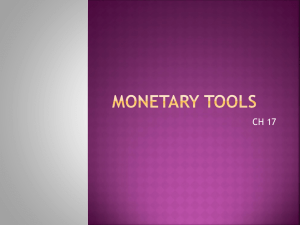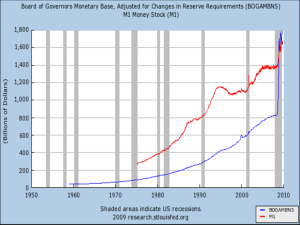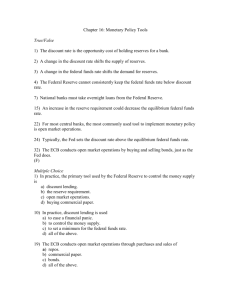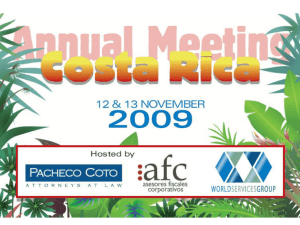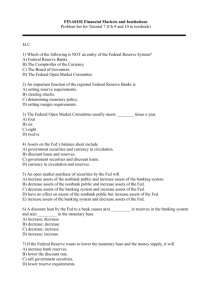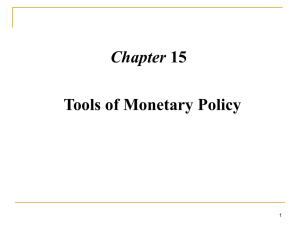Chapter # 15
advertisement
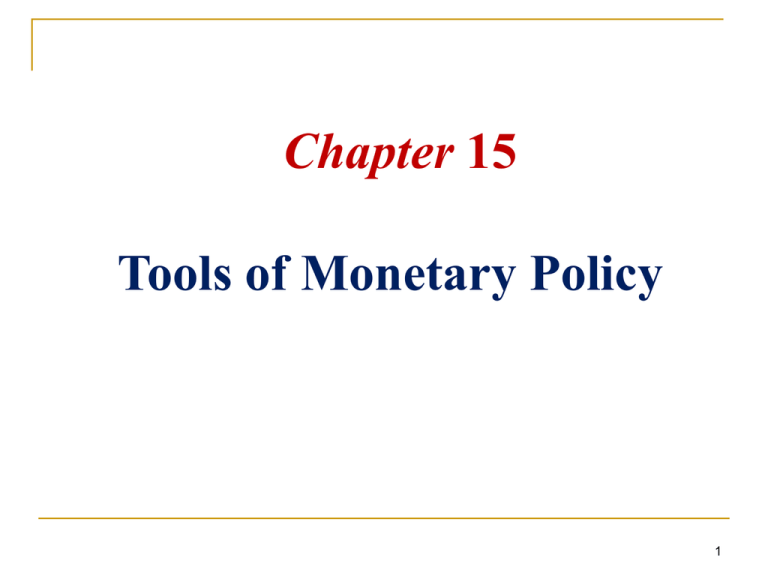
Chapter 15 Tools of Monetary Policy 1 The Market for Reserves and the Interbank Rate The reserves market is where the interbank rate is determined. The equilibrium interbank rate is determined at the point of intersection between the reserves supply and demand curves. 2 How Changes in the Tools Affect the Interbank Rate 1. OMOs: A purchase of bonds by the central bank increases the quantity supplied of reserves in the reserves market, which shifts the reserves supply curve to the right. Result: An open market purchase ___ the interbank rate, while an open market sale causes the interbank rate to ____. 3 2. Discount Lending An increase in discount lending leads to an increase in the quantity supplied of reserves, which shifts the reserves supply curve to the right. Result: An increase in discount lending causes the interbank rate to ___, while a decline in discount lending causes the interbank rate to ____. 4 3. Reserve Requirements A rise in the required reserve ratio increases the quantity demanded of reserves, which shifts the reserves demand curve to the right. Result A decline in the required reserve ratio causes the interbank rate to ____, while an increase in the required reserve ratio causes the interbank rate to __ 5 Open Market Operations They are the most important monetary policy tool because they are the primary determinants of changes in interest rates and the monetary base, which is the main source of fluctuations in the money supply. Types of Open Market Operations Dynamic OMOs: intended to change the level of reserves and the MB. Defensive OMOs: intended to offset movements in other factors that affect reserves and the MB. 6 Advantages of OMOs 1. The central bank can start them and has complete control over the size of operations and securities traded. 2. They are flexible and precise. The central bank can change the level of reserves and MB by any desired amount. 3. They are easily reversed. If a mistake is made, it can be immediately reversed. 4. They can be implemented quickly because they involve no administrative delays. 7 Discount Policy Primarily involves changes in the discount rate. It affects the money supply by affecting the volume of discount loans. A rise in discount loans increases reserves, MB, and money supply, vice versa. Lender of last Resort: Discount lending prevents financial panics by providing banks with reserves when no one else would do so. Announcement Effect: Discount lending can be used to signal the central bank’s intentions about future monetary policy. 8 Advantage of Discount Lending Performing the role of lender of last resort, therefore strengthening financial institutions. Disadvantages of Discount Lending 1. Creating confusion about the intentions of the central bank through the announcement of discount rate changes. 2. Setting the discount rate at a particular level results in large fluctuations in the spread between market interest rates and the discount rate, when market interest rates change. This leads to fluctuations in discount loans and money supply. 9 Discount Loans and Interest Spread 11 Reserve Requirements They affect money supply by affecting reserves and the money multiplier. A rise in reserve requirements: 1) reduces excess reserves and banks’ ability to lend, 2) increases the demand for reserves, 3) increases the interbank rate, and 4) reduces the money supply. 12 Advantage of Reserve Requirements It affects all banks equally and has a powerful effect on money supply. Disadvantages of Reserve Requirements 1. Not practical because small changes in required reserve ratio leads to large changes in money supply, making mistakes too costly. 2. Raising reserve requirements may cause liquidity problems for banks with low excess reserves. 13

